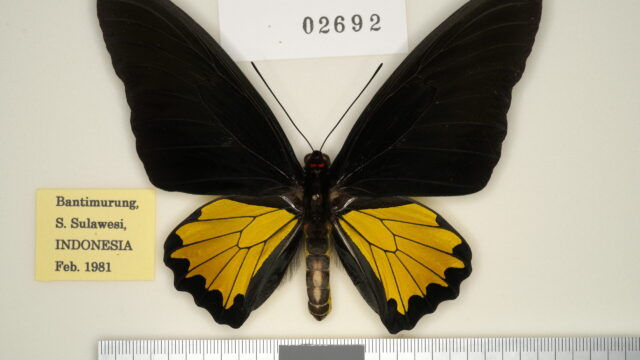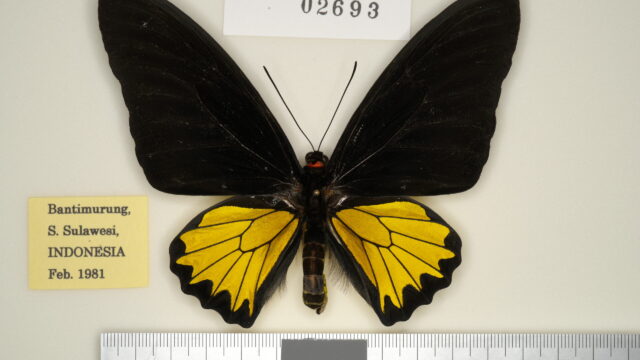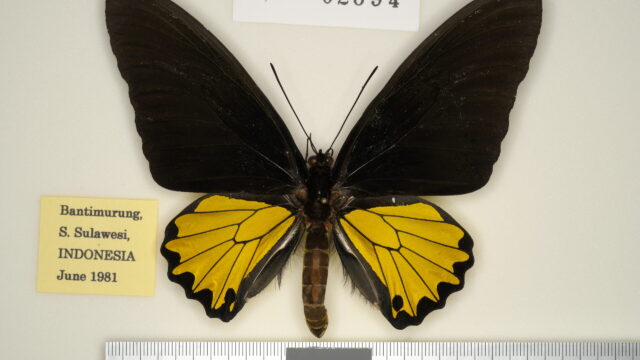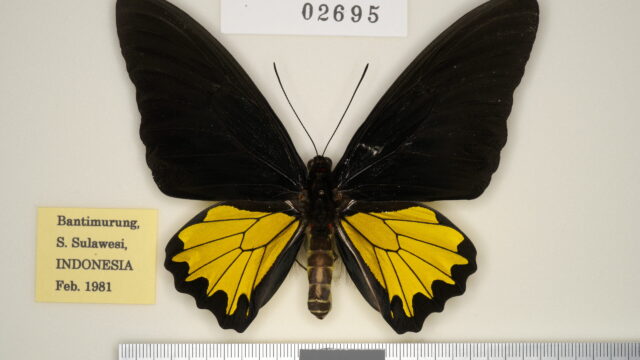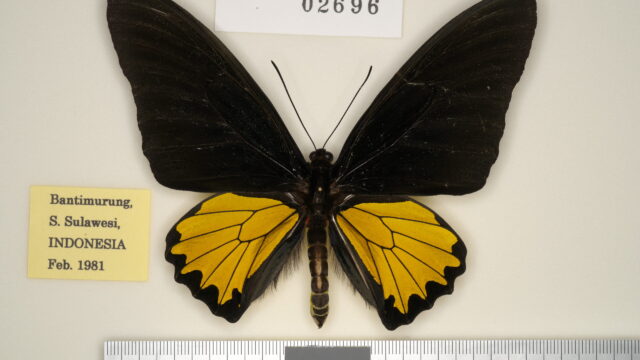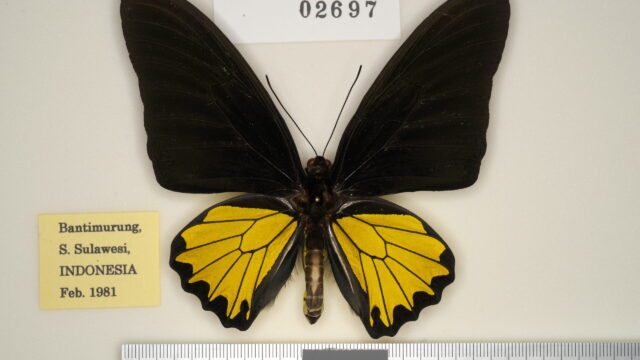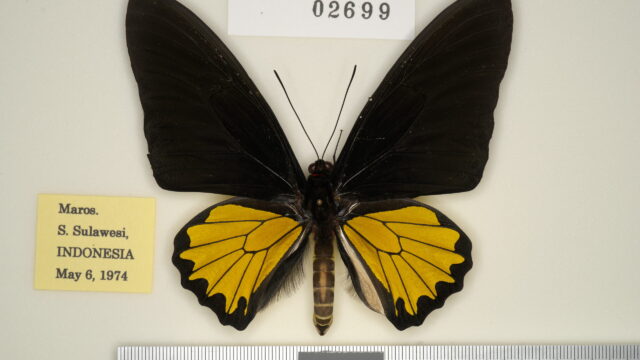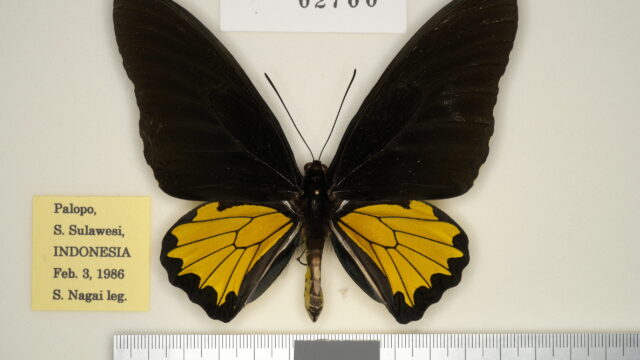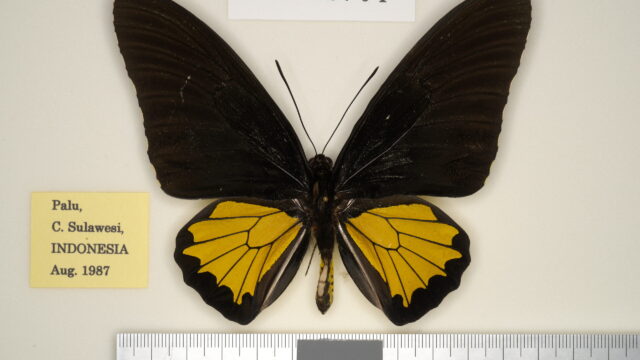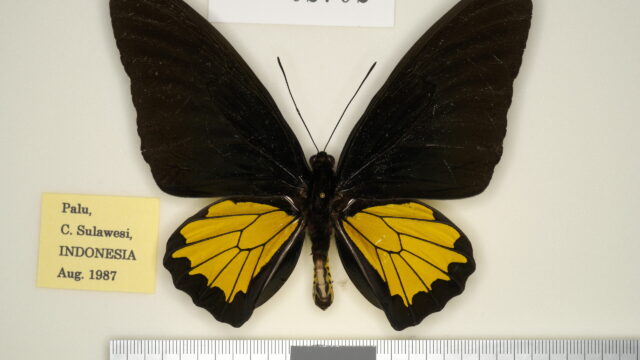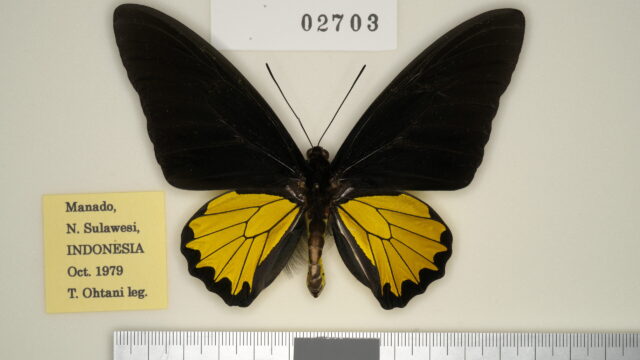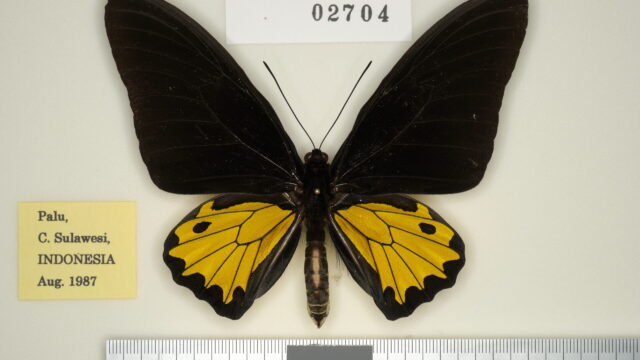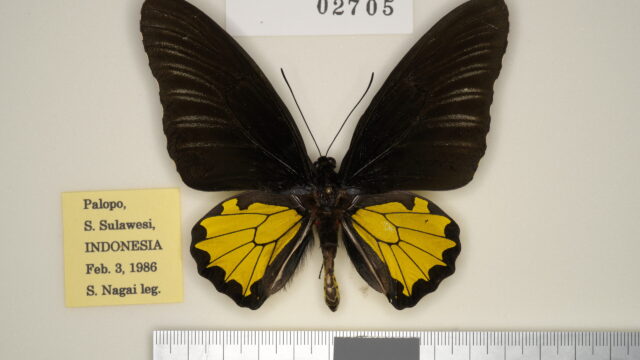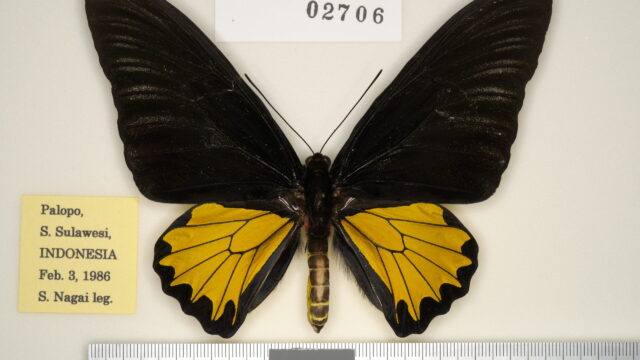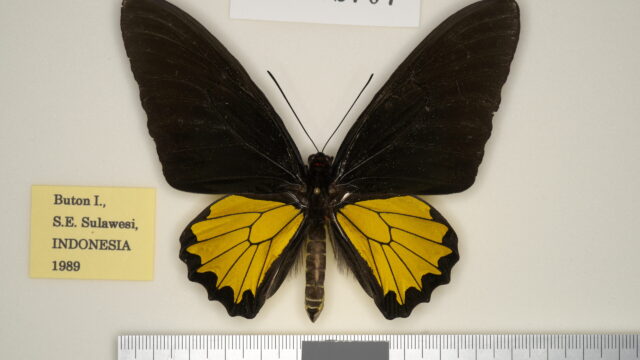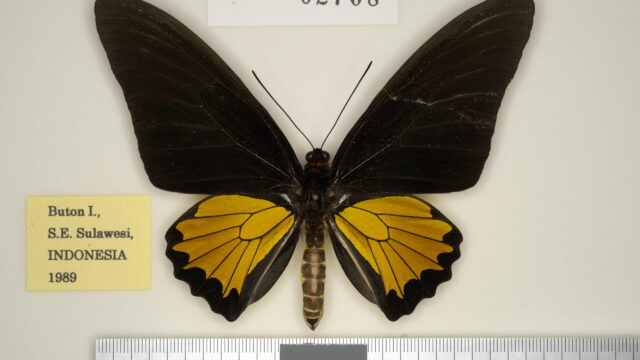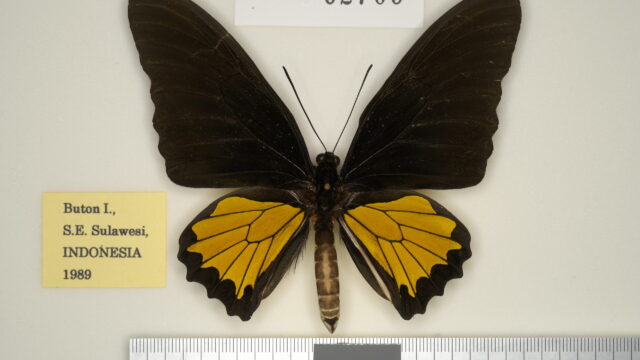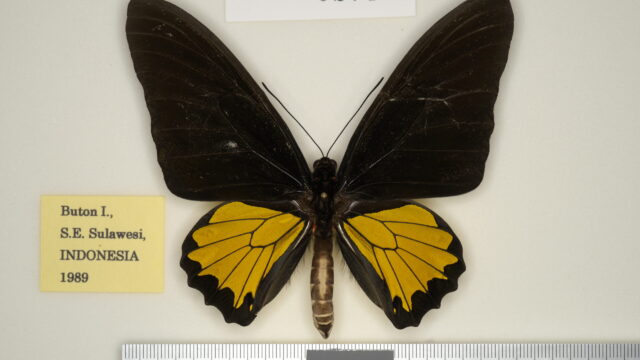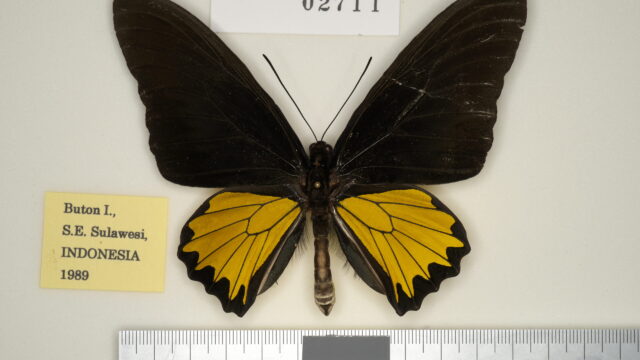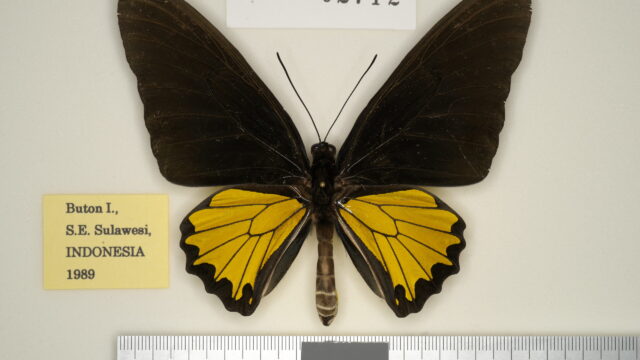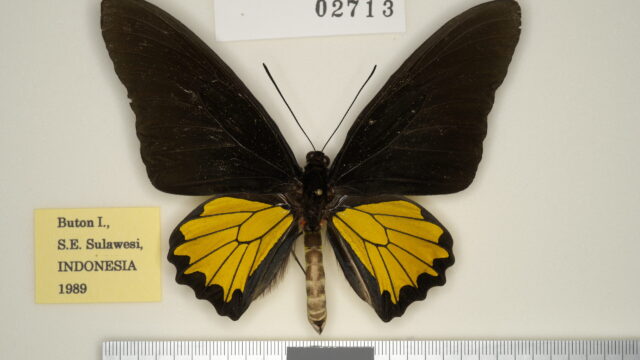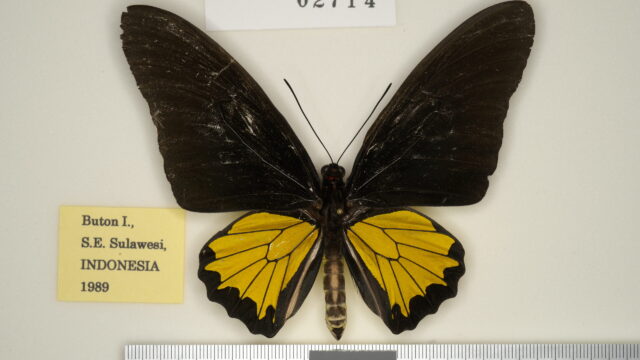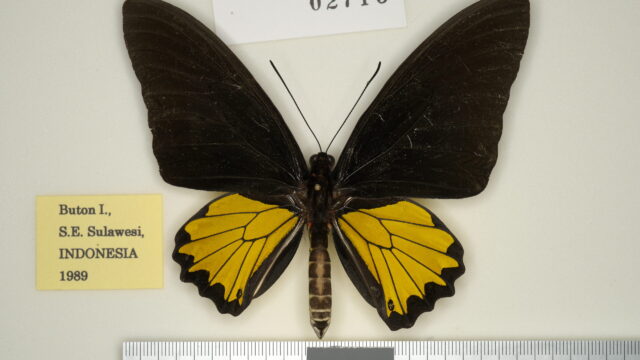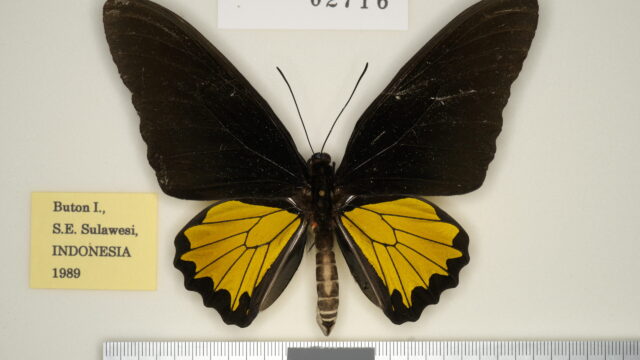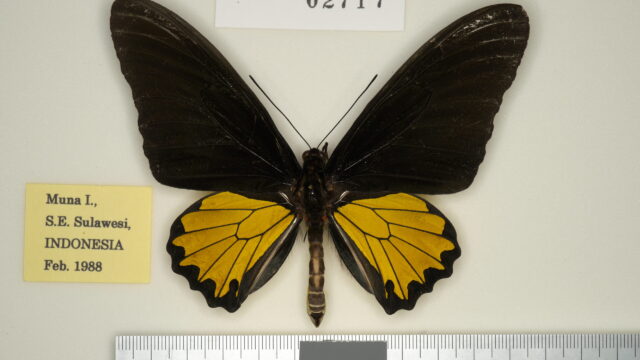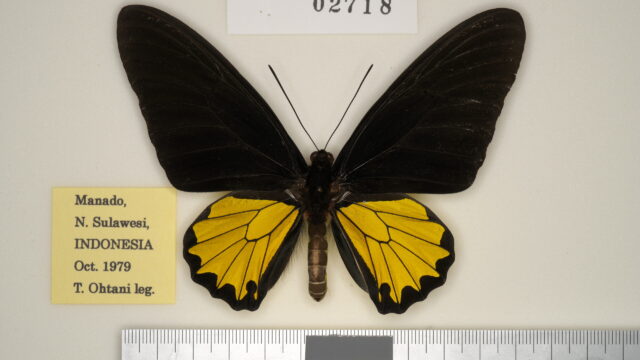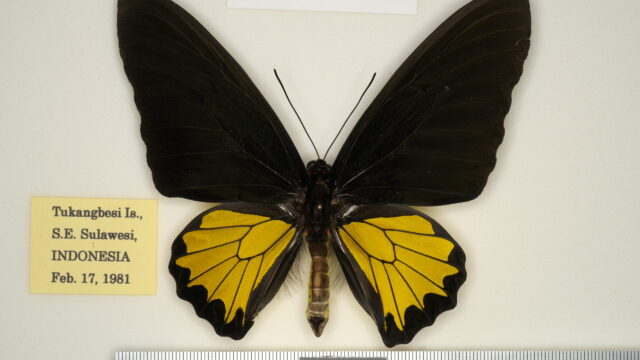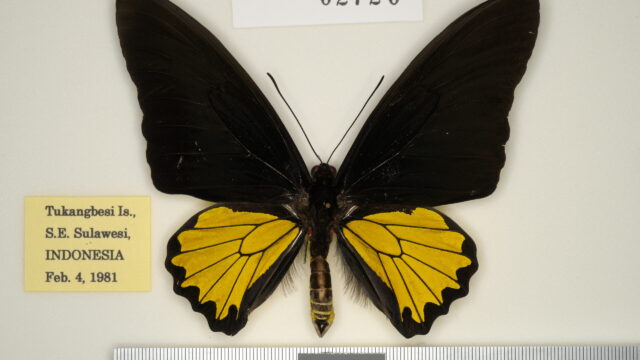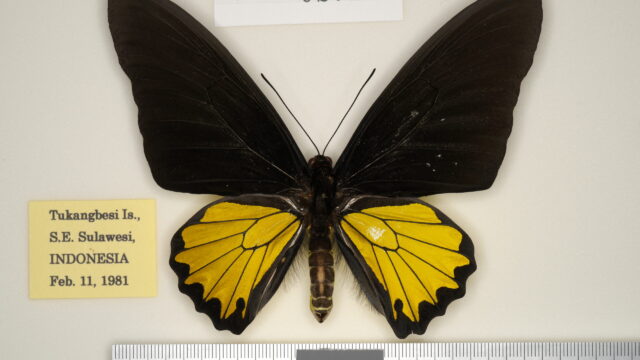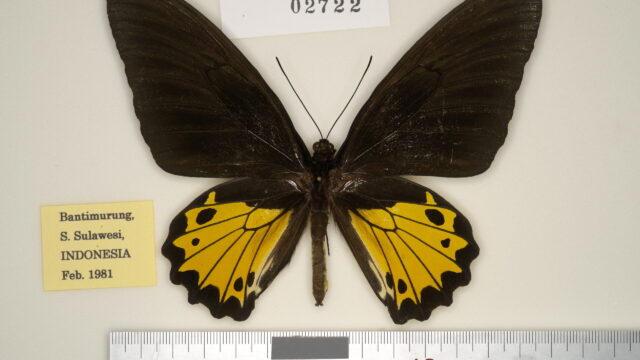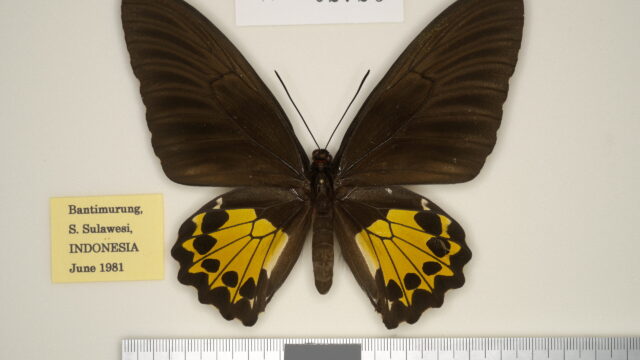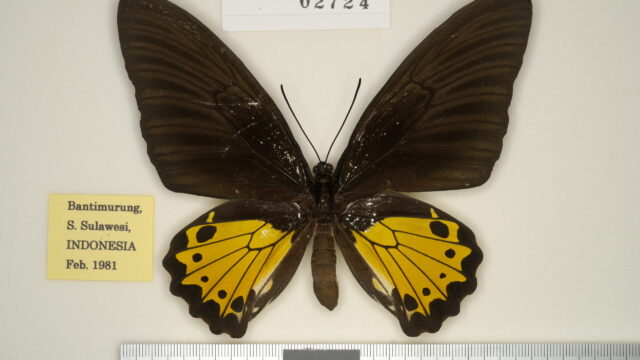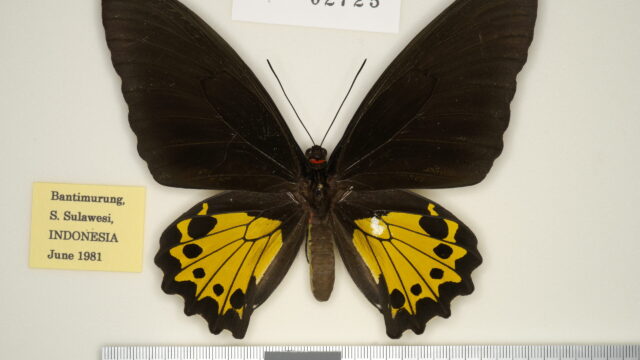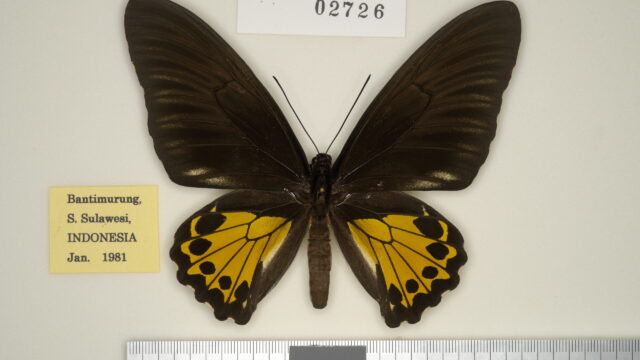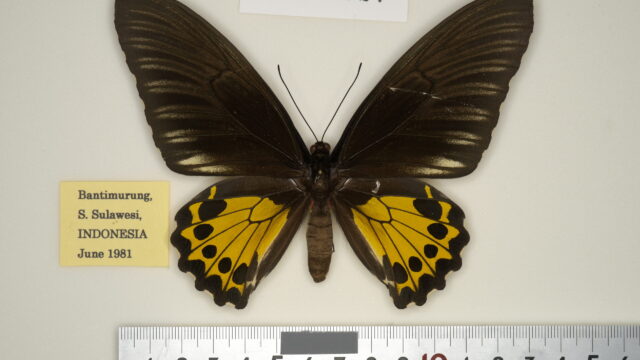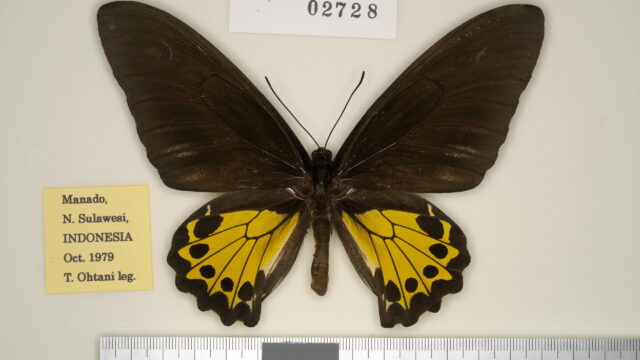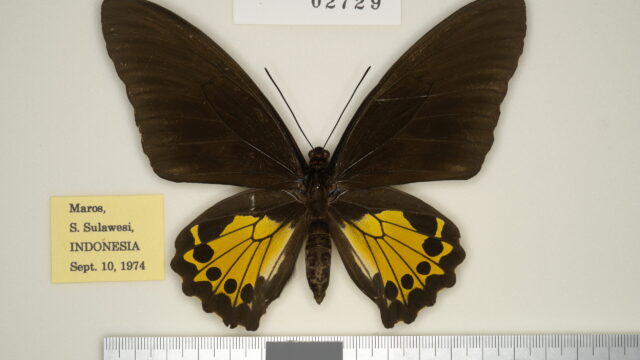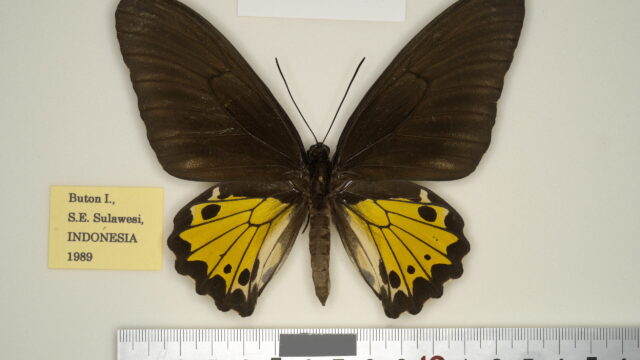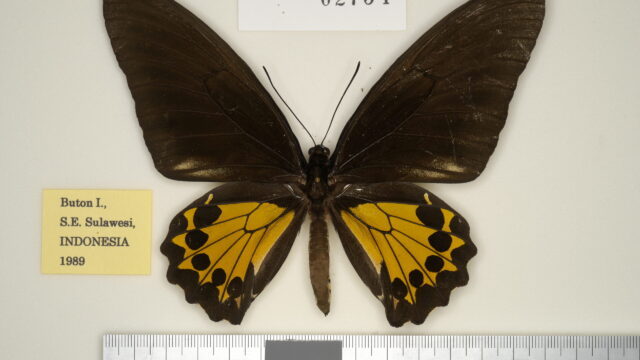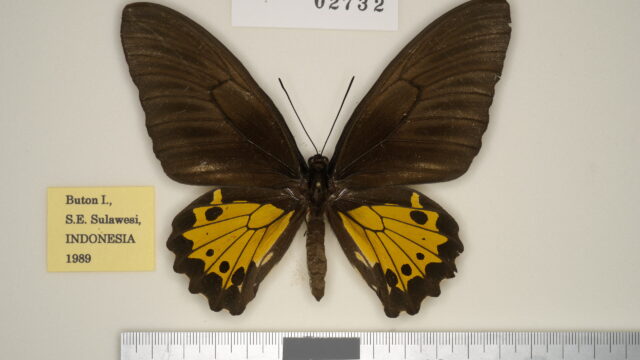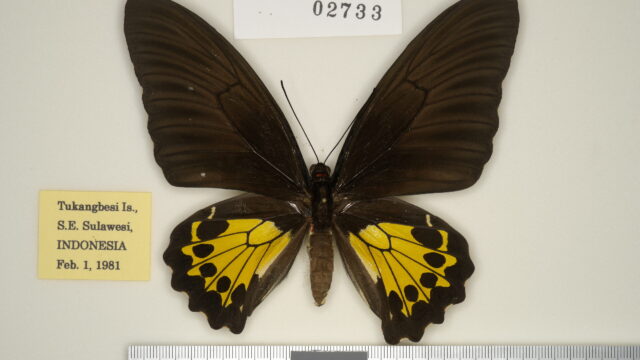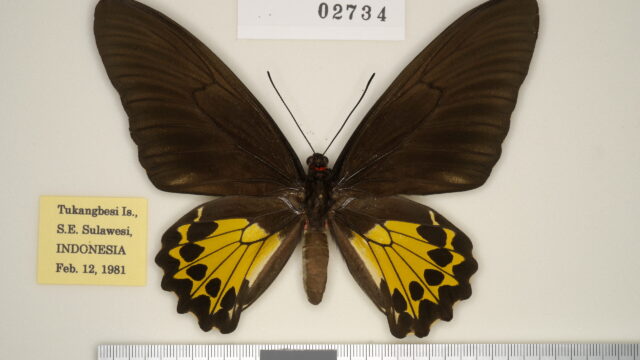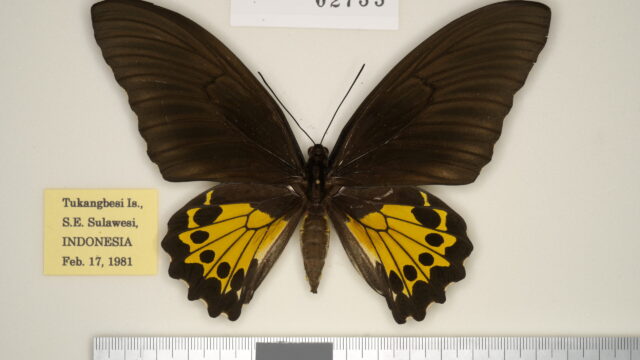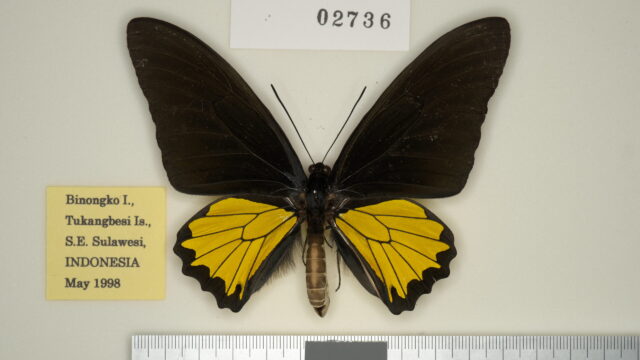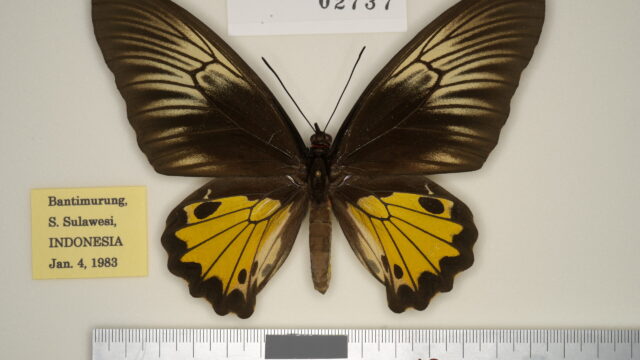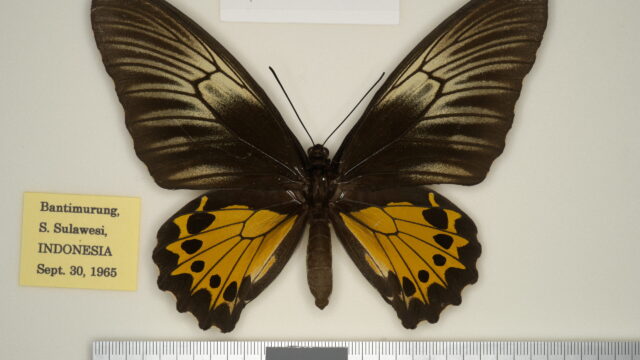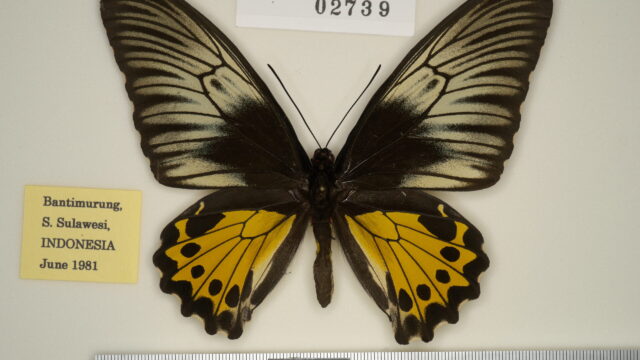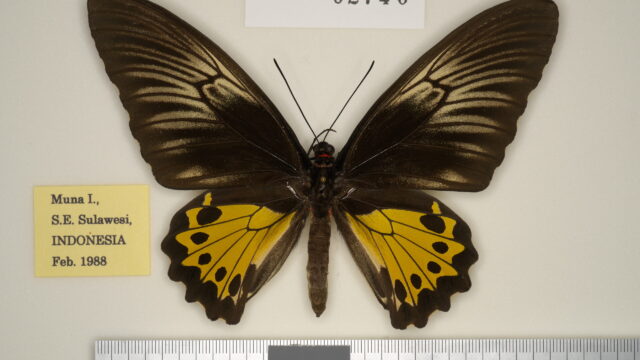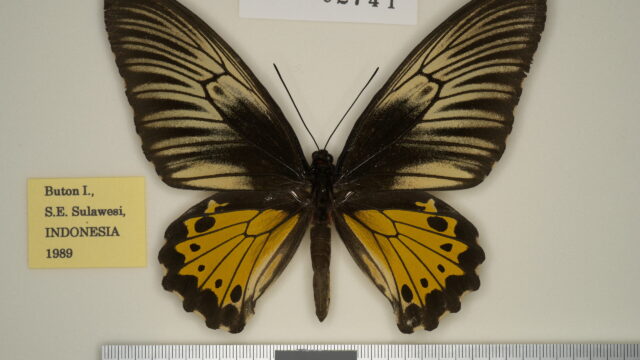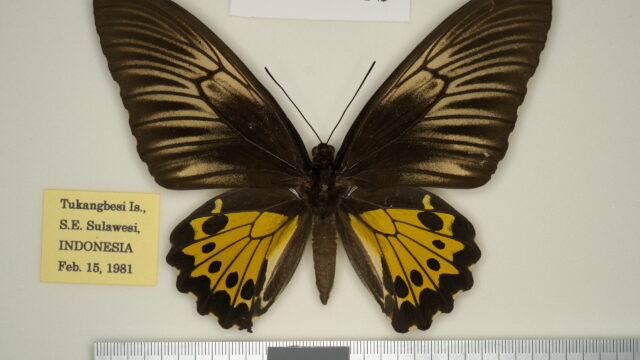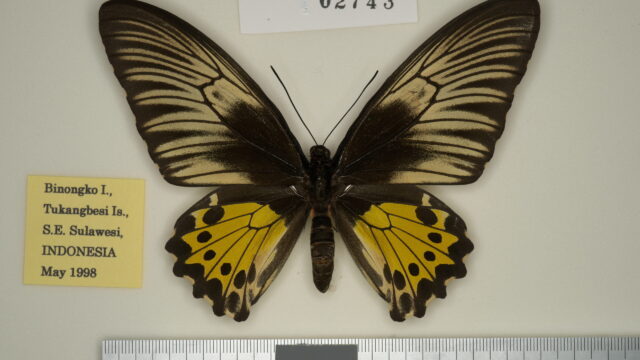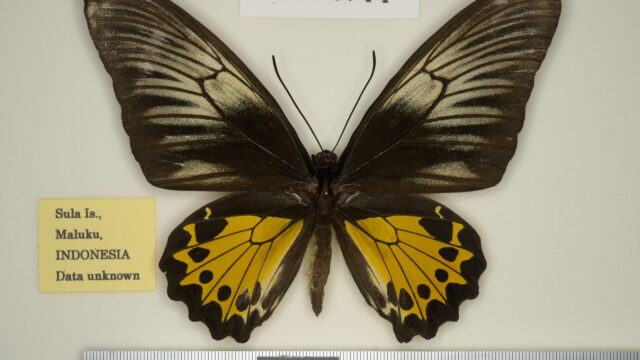- Ssp. hephaestus (Felder, 1865)8) [♂, ♀] (♂: 2 forms, ♀: 2 forms)
= leda (Wallace, 1865)36) [♂, ♀] (Celebes (=Sulawesi))
= neoris Rothschild, 190830) [♂, ♀] (Tukangbesi Islands (Binongko Is.)
= mopa Rothschild, 190830) [♀] (Buton Is.)
(Distribution) [Map 137]
INDONESIA [N. Sulawesi] Manado, Mt. Lokon, Tondano, Doloduo, [C. Sulawesi] Palu, Banggai Islands (Peleng Is.), [S. Sulawesi] Palopo, Camba, Maros, Bantimurung, Selayar (=Kabia) Is., [S.-E. Sulawesi] Unaaha, Kabaena Is., Muna Is., Buton Is., Tukangbesi Islands (Tomea Is., Binongko Is.).
(Episodes of discovery and original description)
Based on ♂ and ♀ collected in Celebes, Felder (1864) described it as an independent species, but Hopffer (1874) demoted it to a subspecies. The following year, Wallace (1865) described the independent species leda from ♂ and ♀ collected by himself in Macassar and Menado, Celebes, and it is the same subspecies as hephaestus. The subspecies name hephaestus is a reference to Hephaestus (Hephaistos), the Greek god of fire and forges.
(Characteristics)
The distribution area of this subspecies partially overlaps with that of the alternate species oblongomaculatus (thestius) in southern parts of Sulawesi Is. This subspecies differs from the other subspecies in its large size, pointed apices of FW and HW, and less wavy outer margin of HW, rather like the alternate species T. oblongomaculatus.
(Spotted pattern)
♂: FW is glossy black, usually without vein-stripes, but some individuals have distinct vein-stripes. The underside of FW has more or less vein-stripes, but there is individual difference. A semi-translucent golden spot on the subcostal space is large and extends towards V8th. The black marginal border is broad, but black projections are only slightly uneven.
- Dark form (♂-f. hephaestus (Felder, 1865)8)): FW without vein-stripes.
- Light form (♂-f. takashii Haugum & Low, 198514)): FW with grayish white vein-stripes.
♀: It can be divided into two forms according to the presence or absence of vein-stripes on FW, but many intermediate forms exist. On the HW, the cell-spot is located apically from the origin of V7th, and a spot on the subcostal space is vestigial subapically. The dark discal spots are small and isolated, and do not touch or fuse with the dark marginal border.
- Dark form (♀-f. hephaestus (Felder, 1865)8)) (=lygaea (Jordan, 1908)18)): FW without vein-stripes.
- Light form (♀-f. lucinda (Jordan, 1908)8)): FW with grayish white vein-stripes.
(Variation)
♂-f. punctata Rumbucher & Schäffler, 200532): [Aberrant HW pattern] One or several black discal spots on HW. (➡cerberus )
♂-f. imperialis Zondervan, 194038): [HW discoloration] HW pale band is vermilion-red.
♂-f. bruno Rumbucher & Schäffler, 200532): [ HW discoloration] HW pale band is orange-brown.
♀-f. mars Rumbucher & Schäffler, 200532): [Aberrant HW pattern] HW without dark discal spots.
♀-f. imperialis Zondervan, 194038) [HW discoloration] HW pale band is vermilion-red as in ♂.
